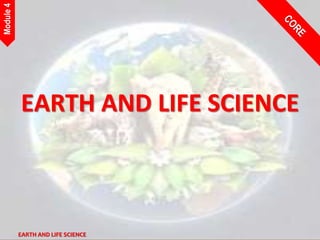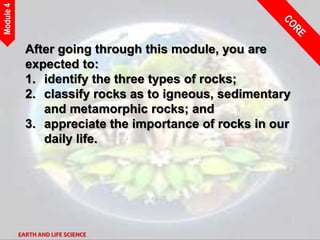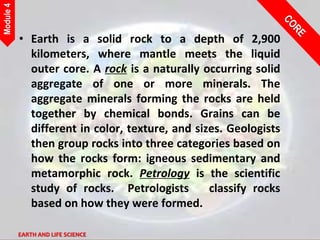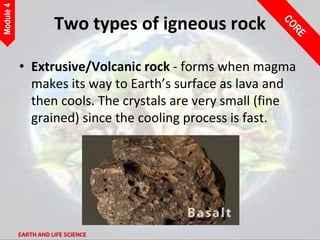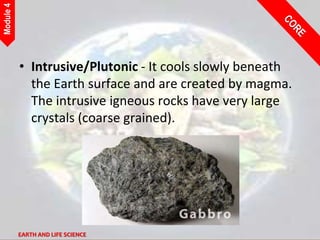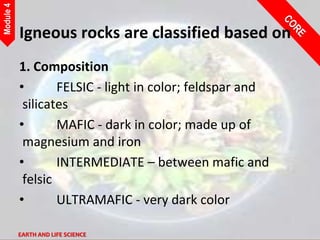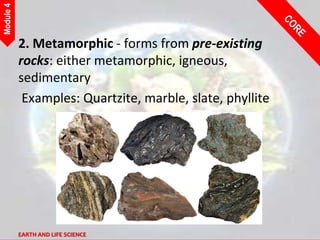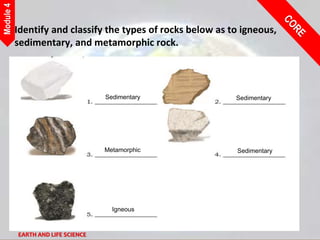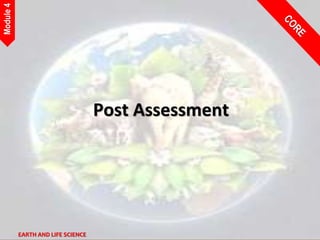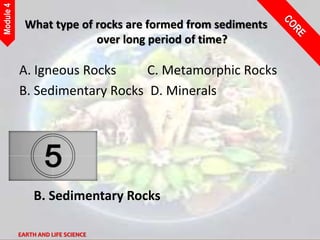This document provides an overview of rocks and the three main types - igneous, sedimentary, and metamorphic. It defines rocks as naturally occurring aggregates of minerals. Igneous rocks form from cooling magma, and can be extrusive or intrusive. Sedimentary rocks form through compaction and cementation of sediments. Metamorphic rocks form from pre-existing rocks undergoing changes in pressure and temperature. The document outlines characteristics and examples of different rock types, and provides assessment questions to test understanding.
